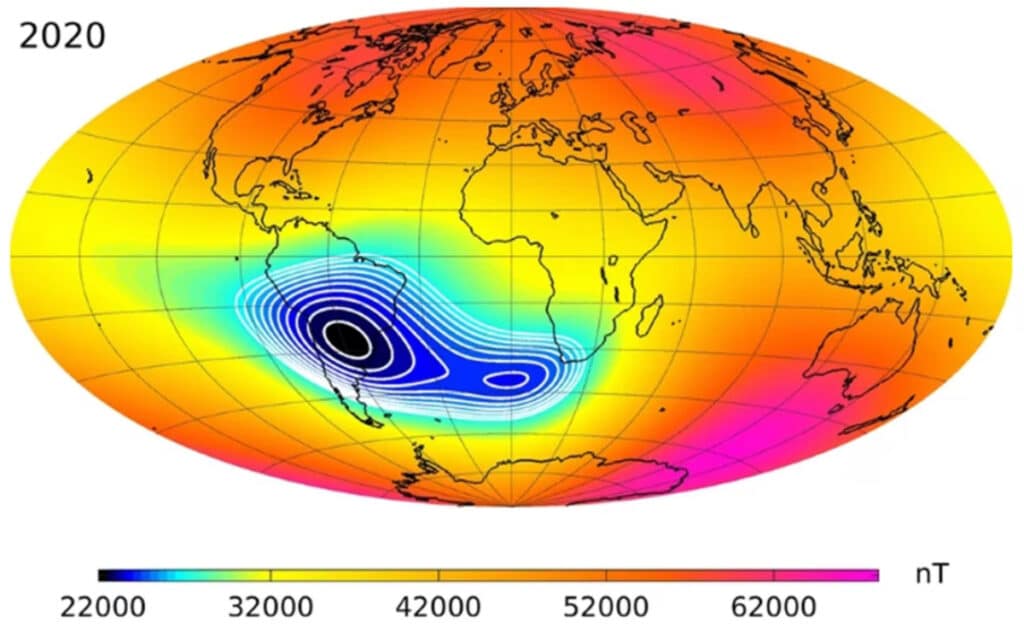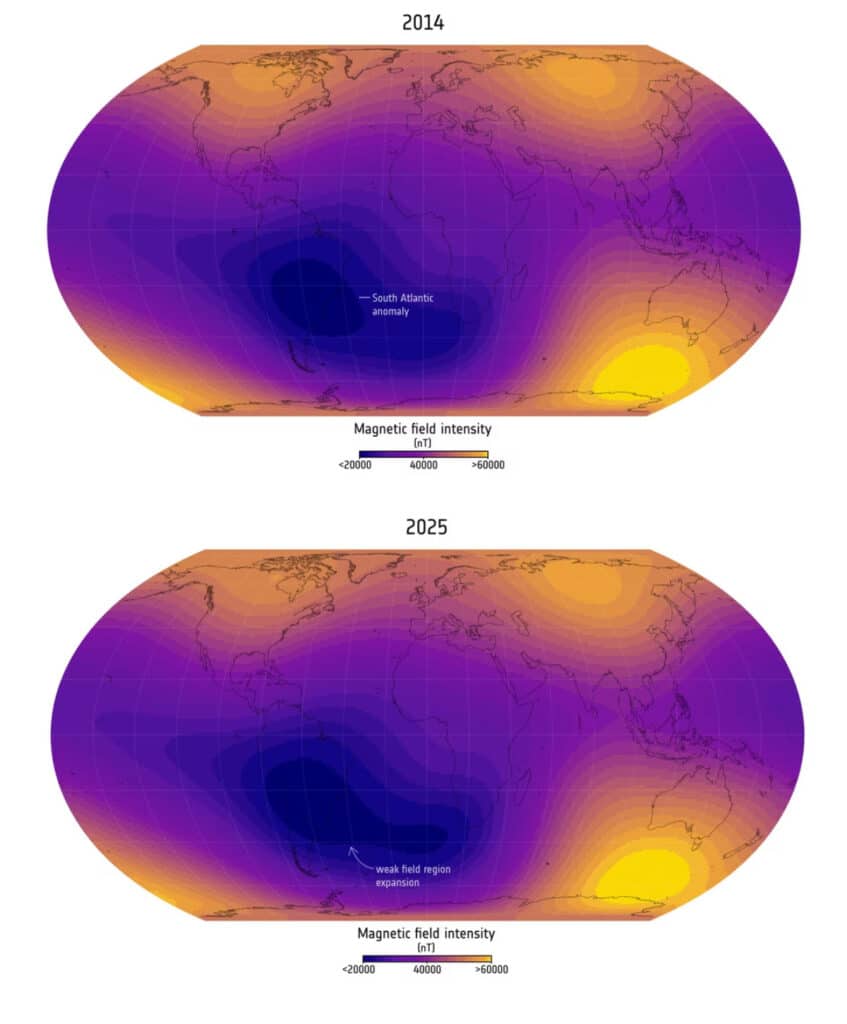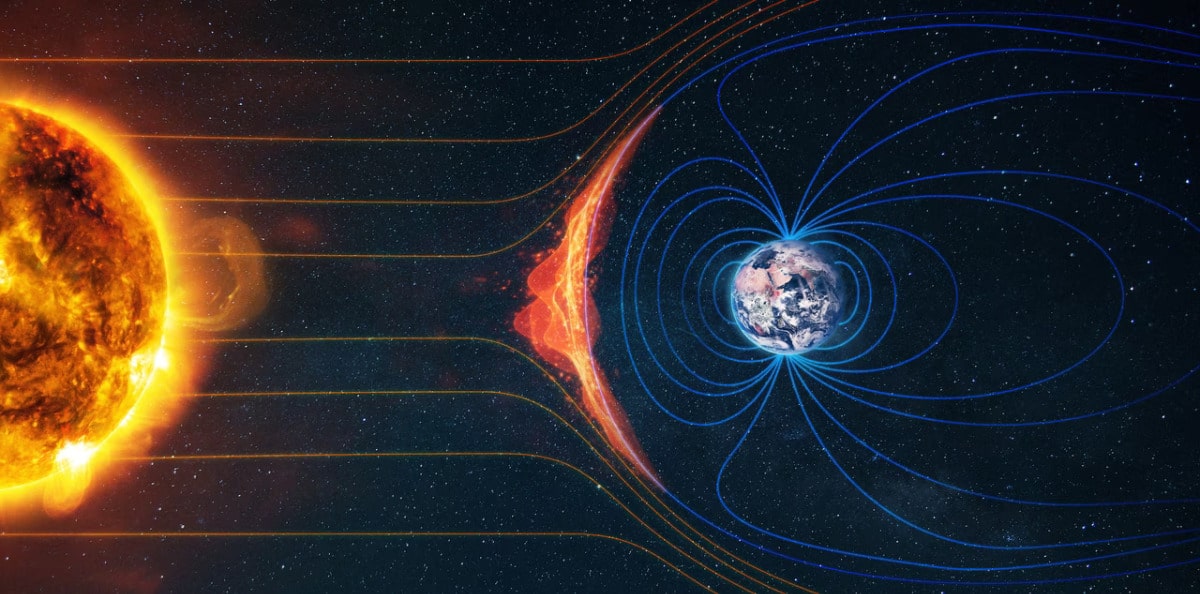Something strange is happening above the South Atlantic. Earth’s magnetic field, normally a powerful shield, is unusually weak in this region – and it’s getting weaker. New satellite data reveal that this mysterious zone is expanding fast, and scientists are starting to worry.
Called the South Atlantic Magnetic Anomaly, this patch lies off Brazil’s coast in the southern Atlantic Ocean. Here, Earth’s magnetic field behaves differently – and not in a good way.
While this phenomenon has been known for over a century, a recent study in Physics of the Earth and Planetary Interiors has uncovered troubling new details. In 2013, three small European satellites – collectively known as Swarm – were launched into orbit to track changes in Earth’s magnetic field. What they found was surprising.
A fast-growing weak spot the size of a continent
At first, Swarm picked up the anomaly just as expected – it’s been on scientists’ radar since the 1800s. It’s tied to the Van Allen belt, a region of Earth’s magnetosphere packed with particles from solar wind.
Because the planet is tilted, this belt sits closer to Earth’s surface over the South Atlantic than over other regions, like the North Pacific. That makes radiation levels in this part of the world significantly higher.

Visualization of the Earth’s magnetic field with the anomaly in dark blue. © Wikimedia Commons
None of this was shocking – until the anomaly began to grow. Since 2014, the affected area has ballooned so dramatically that by 2025, it nearly reaches the coast of South Africa. That’s an expansion equal to half of Europe’s landmass – in just ten years.
Even more concerning: the field’s weakening seems to have accelerated rapidly since 2020. Chris Finlay, a geomagnetism expert and co-author of the study, told the European Space Agency, ‘We expect the magnetic field to emerge from the planet’s core. But in this anomaly zone, we’re seeing unexpected areas where the field appears to be diving back in.’
An underground mystery that could have global consequences
The magnetic field forms deep underground, where Earth’s rocky mantle meets its molten core. Some unknown processes down there may be triggering the strange behavior seen in this region.
Thanks to Swarm’s incredibly detailed readings, researchers also spotted other shifts – including a strengthening magnetic field over Siberia, offset by a weakening one over Canada.

Comparison of the magnetic anomaly in 2014 and 2025. © ESA (Data source: Finlay, C.C. et al., 2025)
But this isn’t just an academic concern. Variations in the magnetic field, even if localized, can disrupt satellites, GPS systems, and communications networks. The South Atlantic zone is especially vulnerable due to its heightened exposure to solar radiation.
And here’s the catch: we can’t prevent these effects. All we can do is monitor them and try to forecast what they’ll cause. Swarm has been critical to that effort – though its original mission was supposed to end in 2017, the instruments have held out admirably.
Now, researchers are hoping for a new generation of satellites to carry on this vital work.

Hugo Ruher
Science journalist
Science journalist, I am above all passionate about space, which is what inspired me to pursue this specialty. Drawn to science in general, I also closely follow news related to the environment and technology.
After earning a degree from Sciences Po Toulouse, I began working in radio, covering general news, international issues, and even local problems. At the same time, I started a career as a science journalist, first focusing on space and later on environmental topics.
Making complex information simple
A large part of my work involves reading scientific studies published in various journals, texts that are often complex or downright indigestible! My goal is to extract information from them and make it accessible to a broader, non-expert audience. This ambition is what truly drives me.
This path has led me to write for teen magazines like Cosinus, highly specialized publications such as Industrie & Technologies, as well as more mainstream outlets like Numerama or Le Monde.
In addition to that, I also sometimes write about topics that are a bit more “lightweight.” The digital world, ranging from the use of social media to AI, and even the culture around video games—are areas that I find fascinating and worth covering with a serious approach.


